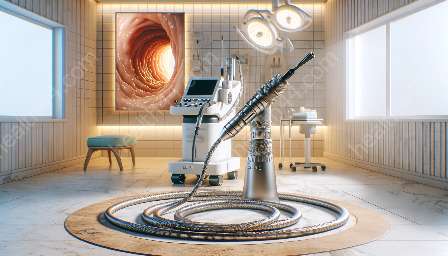When it comes to medical imaging and diagnostic tools, colonoscopes and endoscopes are vital devices used in the healthcare industry. These instruments are a crucial part of modern medical practices, providing physicians with the capability to examine the internal structures of the body and diagnose various conditions. In this comprehensive guide, we will delve into the world of colonoscopes, endoscopes, and other medical devices and equipment, exploring their purpose, technology, and latest advancements. Let's explore the intricate world of these essential medical tools.
What are Colonoscopes and Endoscopes?
Colonoscopes and endoscopes are both types of medical devices used for internal examination and diagnostic procedures. Endoscopes are a broader category of medical devices that include various types such as gastroscopes, bronchoscopes, and colonoscopes. A colonoscope is a specific type of endoscope designed for inspecting the colon and rectum.
These devices consist of a long, flexible tube with a camera and light source attached to the end. Physicians can maneuver the scope through the body's internal structures, capturing high-definition images and videos of the internal organs to diagnose conditions such as gastrointestinal diseases, polyps, and cancer. The advancement of technology has led to the development of thinner and more flexible scopes, improving patient comfort and diagnostic accuracy.
Medical Devices & Equipment in Endoscopy
Endoscopes encompass a wide range of medical devices and equipment used for examining the internal structures of the body. Gastroscopes are used to visualize the upper digestive system, including the esophagus, stomach, and duodenum. Similarly, bronchoscopes are utilized to examine the airways and lungs, aiding in the diagnosis of respiratory disorders.
Moreover, the field of endoscopy has seen significant technological advancements in recent years, with the integration of video imaging, high-definition displays, and miniaturized instruments. These innovations have enhanced the precision and accuracy of diagnostic procedures, enabling healthcare professionals to detect abnormalities and perform therapeutic interventions with greater efficacy.
Uses and Functions of Colonoscopes
Colonoscopes play a crucial role in the early detection and prevention of colorectal cancer, the third most common cancer in the world. These devices are used to conduct colonoscopies, which involve the thorough examination of the colon and rectum. During a colonoscopy, the physician carefully navigates the colonoscope through the patient's colon, inspecting the lining for polyps, tumors, and other abnormalities.
Colonoscopes also enable the performance of therapeutic interventions such as polypectomy, where polyps are removed to prevent the development of colorectal cancer. Additionally, colonoscopes play a pivotal role in the surveillance of patients with a history of polyps or colorectal cancer, aiding in the early detection and management of the disease.
Technological Innovations in Medical Imaging
The field of medical imaging has witnessed remarkable advancements, shaping the landscape of diagnostic tools and equipment. Innovations such as capsule endoscopy have revolutionized the visualization of the digestive system, allowing for non-invasive examination of the small intestine. This technology involves patients swallowing a pill-sized camera that captures images as it travels through the gastrointestinal tract, providing valuable diagnostic information without the need for traditional endoscopic procedures.
Furthermore, the integration of artificial intelligence and machine learning has enhanced the interpretation of medical imaging data, facilitating more accurate diagnoses and personalized treatment plans. These technological developments underscore the continual evolution of medical devices and equipment, contributing to improved patient outcomes and overall healthcare delivery.
The Future of Medical Devices & Equipment
As technology continues to advance, the future of medical devices and equipment holds great promise for further innovation. The integration of wireless connectivity and remote monitoring capabilities in endoscopic devices enables real-time data transmission and consultation with specialists, improving access to healthcare services and expertise.
Moreover, miniaturization and portability are driving the development of handheld endoscopic devices, expanding the reach of diagnostic procedures beyond traditional clinical settings. These advancements have the potential to enhance patient engagement and facilitate early intervention, ultimately leading to better health outcomes.
Conclusion
In conclusion, colonoscopes, endoscopes, and other medical devices and equipment are indispensable tools that contribute to the diagnosis, treatment, and management of a wide range of medical conditions. From the thorough examination of the colon to the visualization of internal organs, these devices play a critical role in modern healthcare practices. The continual evolution of technology and the relentless pursuit of innovation in medical imaging hold the promise of further improving patient care and outcomes.


